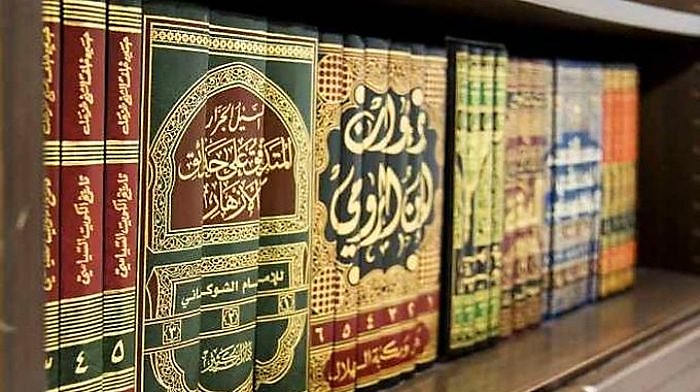Is it true that there has always been an established and universally accepted framework for the principles of *tafsir* (Qur’anic exegesis)? Or is this notion still merely a claim?
The book Al-Ta’lif Al-Mu’ashirah fi Qawa’id Al-Tafsir explores fascinating discoveries regarding the emergence of such claims among contemporary scholars. The topic is particularly fresh within current scholarship, and the historical approach employed by the author is highly thorough.

To the author, tafsir stands out as a unique discipline, distinct from others such as fiqh (Islamic jurisprudence) or usul al-fiqh (principles of Islamic jurisprudence), where the boundaries and principles are well-established and widely agreed upon. The case of tafsir, however, is different. The author argues that the principles proposed by scholars are not uniform, and there has never been a historical consensus on the rules of tafsir among the various levels of mufassirin (Qur’anic interpreters).
The author delves into the issue of contemporary scholars’ works, which claim to outline fixed principles of tafsir. These claims are based on the notion that earlier scholars had already perfected a set of standardized principles, which later became accepted as an unquestionable scholarly authority. This is the very notion the author critically examines in this book.
The author’s research methodology involves collecting works on qawa’id al-tafsir (the principles of exegesis) and organizing them chronologically. The content of these works is then systematically compared. The author demonstrates remarkable insight by offering a comparison of the introductions found in each of these works, revealing differences in how each scholar structured their introduction and approach.
The author identifies several key works on the principles of tafsir and classifies them into four main elements: 1) types of writings, 2) theoretical perspectives, 3) practical approaches (including detailed examination of the principles, explanations, and examples of their application), and 4) the number of principles presented. This categorization makes it easier to trace the development of qawa’id al-tafsir over time.
Next, the author presents the views of contemporary scholars on the standardization of tafsir principles and the methods of ijtihad (independent reasoning). The author argues that the earlier scholars never sought to establish a fixed and standardized set of rules for tafsir, as the principles of tafsir were inherently diverse.
According to the author, what earlier scholars did was to compile the principles of tafsir from various sources, such as tafsir books or other references. Recent scholars have misunderstood the intentions of their predecessors, wrongly assuming that they sought to establish rigid rules for tafsir. However, the author rejects this, arguing that earlier scholars clearly stated that their purpose in writing about qawa’id al-tafsir was not to set binding rules but rather to explain their individual interpretative methodologies.
When did this notion of standardization first emerge? The idea of establishing standardized principles of tafsir began to take shape around the 6th century AH, and by the 14th century AH, a more formal definition of qawa’id al-tafsir had been agreed upon. The author also notes that the idea of standardization only became prominent in the 14th and 15th centuries AH.
Kafiji played a significant role in advancing the effort to standardize tafsir principles. He viewed the principles as a set of tools that were restrictive in nature. According to the author, there is an anomaly regarding the emergence of this standardization movement: the enthusiasm for it seemed to fade after Kafiji and Thayyar completed their works, only to be revived in more recent times.
How does Ibn Taymiyyah’s introduction to qawa’id al-tafsir fit into this context? It is worth noting that the first works on qawa’id al-tafsir appeared in the 6th century AH, long before Ibn Taymiyyah. Furthermore, Ibn Taymiyyah never explicitly labeled his book as one containing “binding principles of tafsir.” This notion was only promoted by later generations after his book was critically examined and titled Usul al-Tafsir (Principles of Exegesis).
Another intriguing aspect is that Ibn Taymiyyah’s writings were not particularly popular, even in Kafiji’s time, when there was concern over the lack of standardized rules for tafsir. Yet, it is evident that Ibn Taymiyyah had already addressed this topic.
A significant downside of this standardization effort is the potential polarization it creates among readers. Following the principles laid out by a particular scholar could lead one to view their interpretation as valid, while dismissing others as incorrect. Despite the disclaimers made by the scholars that these principles are relative, readers are still likely to be drawn towards creating a binary classification of right and wrong when it comes to tafsir.
The key finding of this research is that contemporary works have taken a new step in the history of tafsir principles by advocating for the establishment of comprehensive inductive principles. Over time, as these various principles continued to proliferate, scholars felt the need to consolidate and systematize them.
However, this effort was not based on a clear and objective approach. The author finds this approach problematic and argues that it contradicts the reality of interpretation and the necessary methods of ijtihad. The author contends that the notion of standardization is highly subjective, depending on personal preferences. A writer has the freedom to choose sources, extract rules, evaluate their foundations, and connect them to interpretations or interpreters.
The author concludes that the assumption that universal and inductive interpretive rules have been synthesized, constructed, and defined is an illogical conclusion.
—
Book Information:
Title: Al-Ta’lif Al-Mu’ashirah fi Qawa’id Al-Tafsir: Dirasat Al-Naqdiyyah li Manhajiyyat Al-Hukmi bi Al-Qaidiyyah.
Authors: Dr. M. Salih Muhammad Sulaiman, Khalil Mahmud Yamani, and Mahmud Hamad Sayyid
Publisher: Marka Tafsir li Dirasat Al-Quraniyyah Saudi, 2019.






